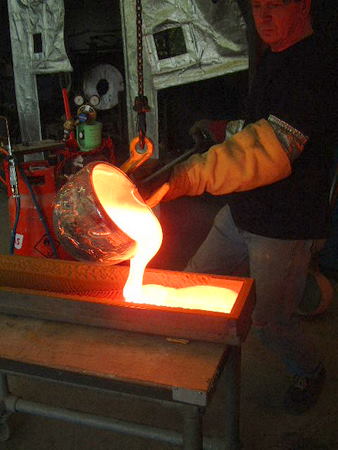Sand Castings
 |
Sand casting is used to make large parts (typically Iron, but also Bronze, Brass, Aluminum). Molten metal is poured into a mold cavity formed out of sand (natural or synthetic). The processes of sand casting are discussed in this section, include patterns, sprues and runners, design considerations, and casting allowance. The cavity in the sand is formed by using a pattern (an approximate duplicate of the real part), which are typically made out of wood, sometimes metal. The cavity is contained in an aggregate housed in a box called the flask. Core is a sand shape inserted into the mold to produce the internal features of the part such as holes or internal passages. Cores are placed in the cavity to form holes of the desired shapes. Core print is the region added to the pattern, core, or mold that is used to locate and support the core within the mold. A riser is an extra void created in the mold to contain excessive molten material. The purpose of this is feed the molten metal to the mold cavity as the molten metal solidifies and shrinks, and thereby prevents voids in the main casting. |


 Corporate Office | 2411 Crosspointe Drive, Miamisburg, OH 45342 | 937-247-9194 | (fax) 937-247-9468
Corporate Office | 2411 Crosspointe Drive, Miamisburg, OH 45342 | 937-247-9194 | (fax) 937-247-9468